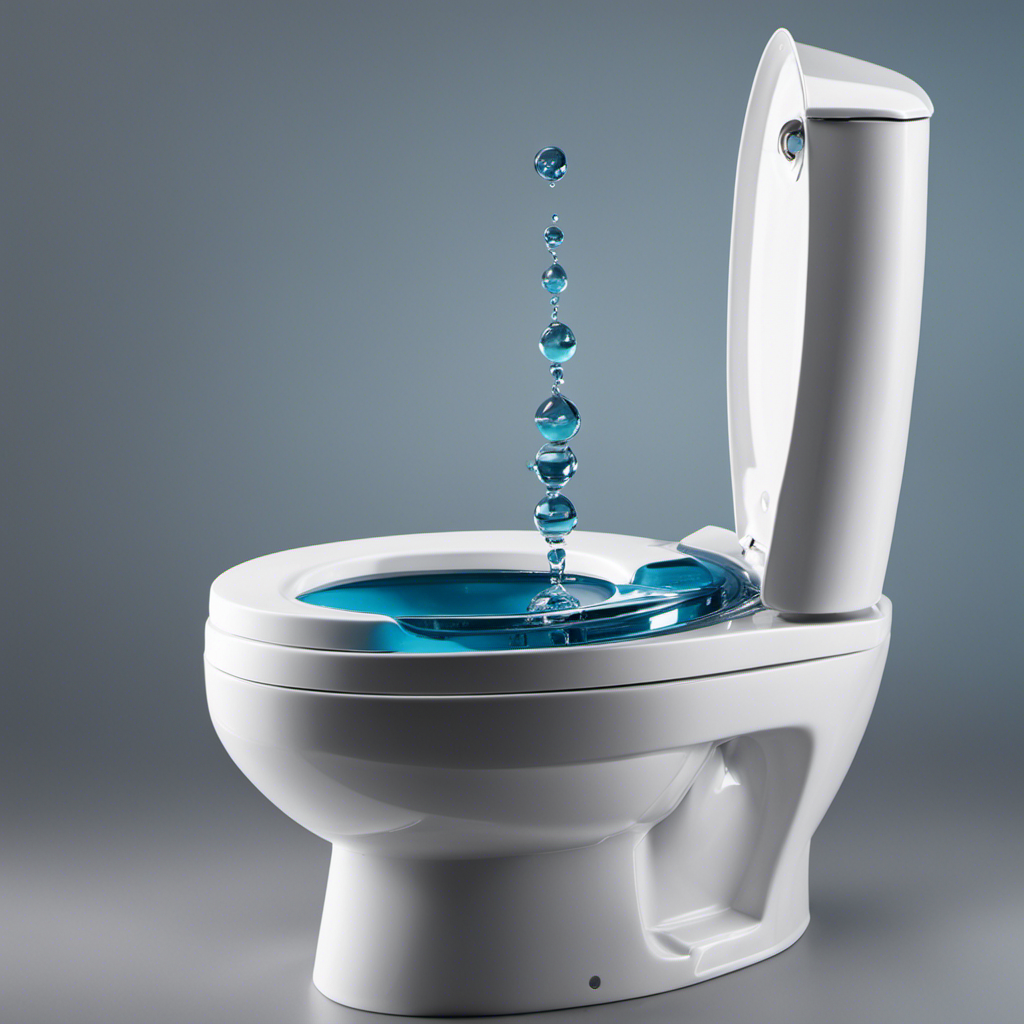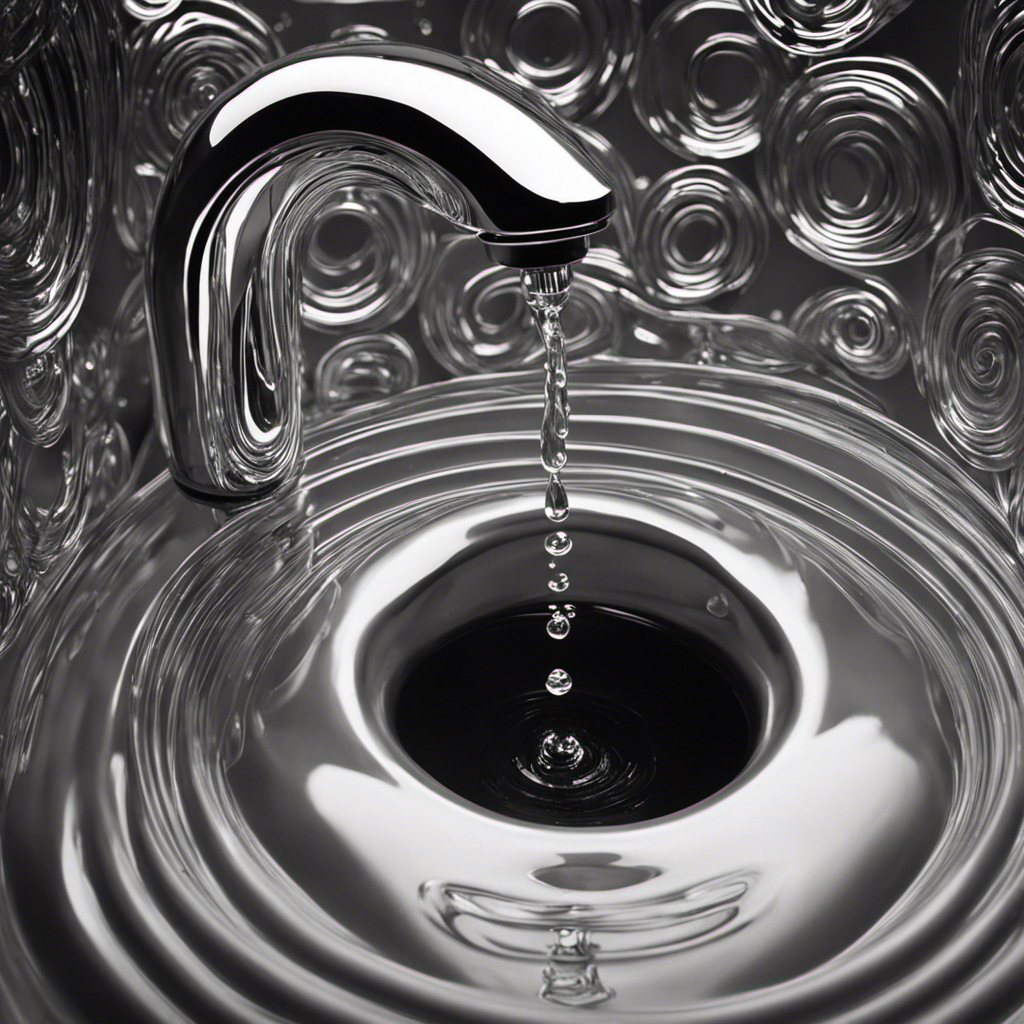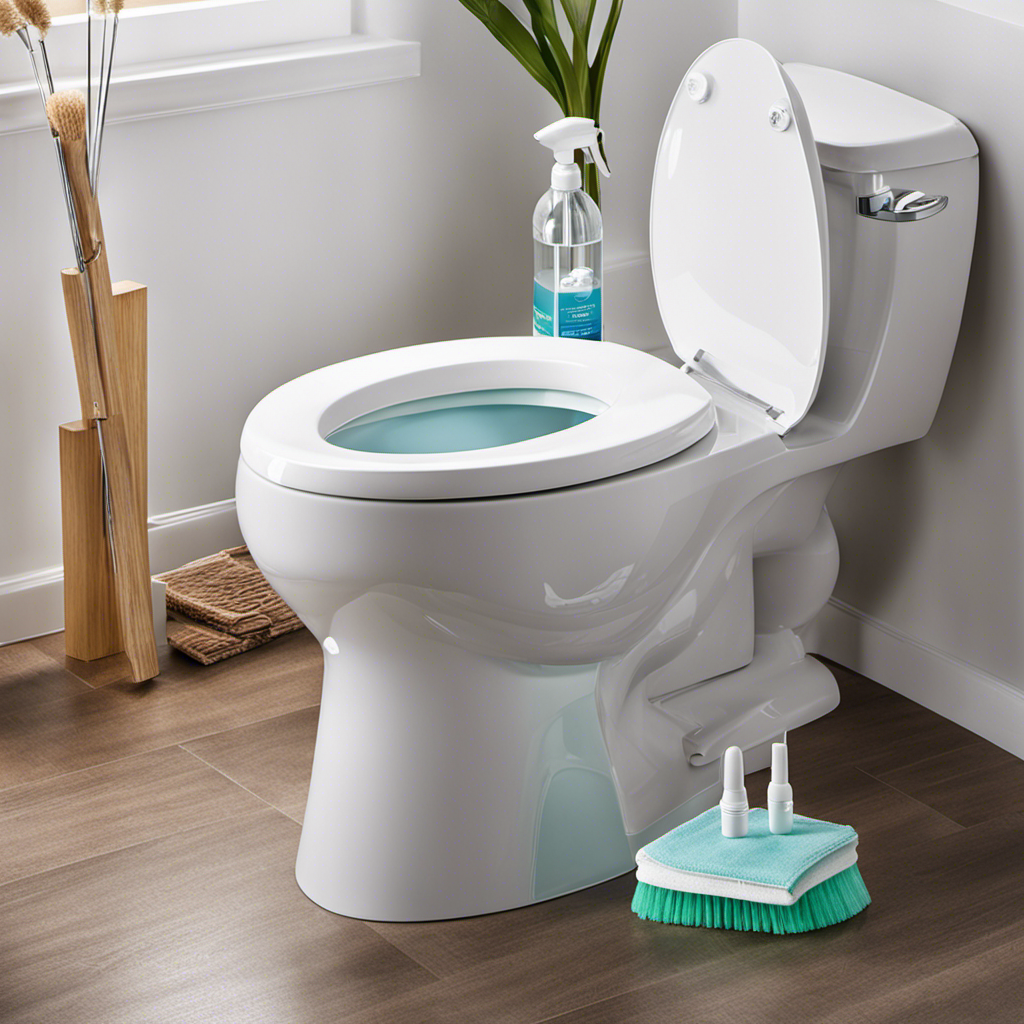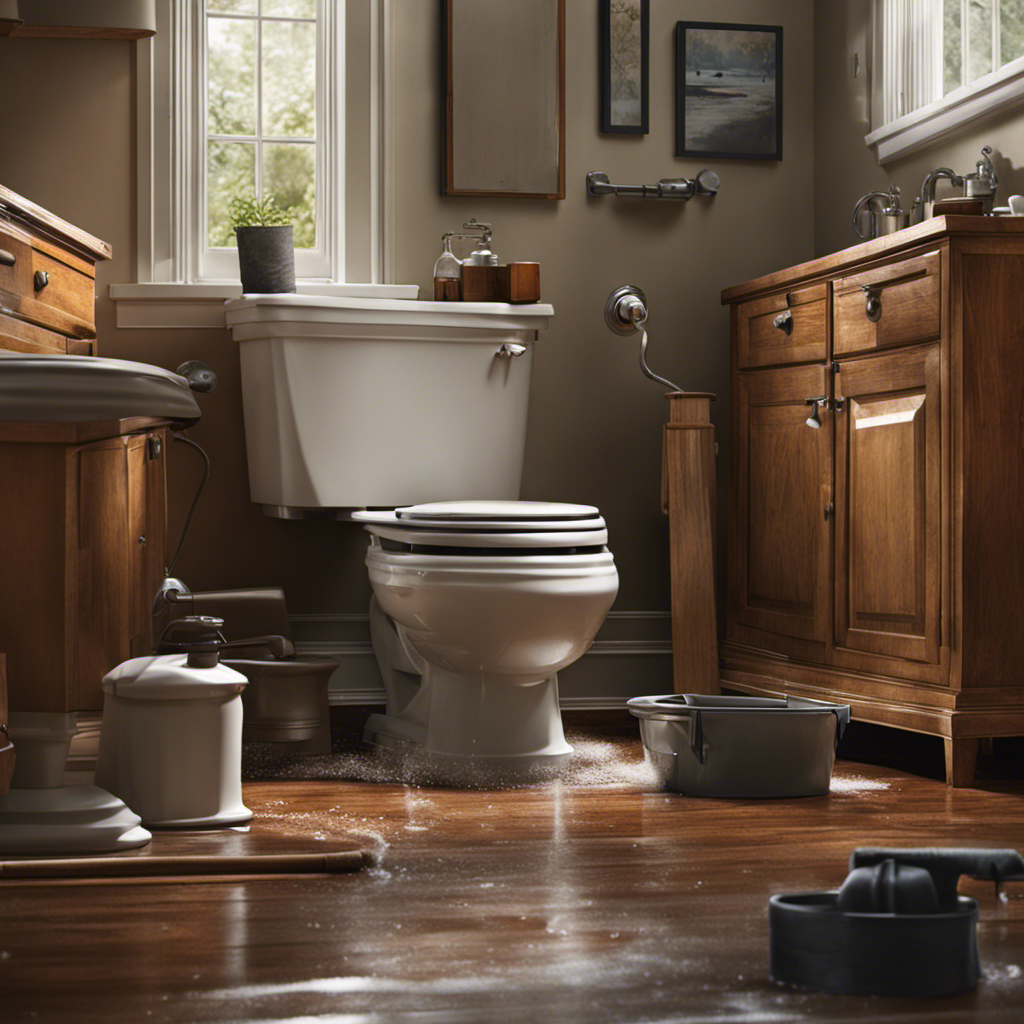Did you know that the water level in your toilet bowl can drop for various reasons?
Well, I’ve got some important information for you. In this article, I’ll be discussing the common causes of a dropping water level in toilet bowls.
We’ll dive into issues with the flush valve, problems with the fill valve, clogs and blockages in the drain, and even leaks and cracks in the bowl or tank.
So, let’s get to the bottom of this issue and find out what’s causing that water level to drop!
Key Takeaways
- Consistently low water level in the toilet bowl may indicate fill valve issues.
- Troubleshooting steps include checking valve connection and leaks.
- Manually lifting the float to test valve opening and closing.
- Debris or mineral buildup can obstruct valve operation and should be cleaned or removed.
Common Causes of a Dropping Water Level in Toilet Bowls
If you notice the water level in your toilet bowl dropping, it could be due to common causes such as a clogged drain or a faulty flapper valve.
Maintaining your toilet bowl is crucial to prevent these issues and ensure proper water levels. Regular cleaning and flushing can help prevent clogs, while checking and adjusting the flapper valve can ensure it is working correctly.
Additionally, incorporating water conservation measures can also contribute to maintaining the water level in your toilet bowl. Installing a dual-flush system or a water-saving toilet can help reduce water usage and maintain the desired water level.
It is important to regularly inspect and maintain your toilet bowl to prevent water wastage and ensure its proper functioning.
Issues With the Toilet Flush Valve
One common issue with toilets is that the flush valve can sometimes malfunction. The flush valve is a crucial component of the toilet flush mechanism, responsible for releasing water from the tank into the bowl during a flush. When this valve malfunctions, it can lead to problems such as incomplete flushing or a weak flush.
Several factors can cause the flush valve to malfunction, including mineral buildup, a misaligned or damaged seal, or a faulty flapper. If any of these components are not functioning properly, it can affect the overall flushing performance of the toilet. It is important to address these issues promptly to ensure the toilet operates efficiently and effectively.
Now, let’s move on to discussing problems with the toilet fill valve.
Problems With the Toilet Fill Valve
To address problems with the toilet fill valve, you should check if the valve is properly connected and functioning. If the water level in the toilet bowl is consistently low, it could be due to issues with the fill valve. There are several troubleshooting steps you can take to identify and fix the problem. First, ensure that the valve is securely connected to the water supply line and there are no leaks. Next, check if the valve is opening and closing properly by manually lifting the float. If the valve is not shutting off the water flow, it may need to be replaced. Additionally, check for any debris or mineral buildup that could be obstructing the valve’s operation. By following these steps, you can effectively troubleshoot and resolve issues with the toilet fill valve.
| Common Problems | Possible Solutions |
|---|---|
| Valve not closing | Replace fill valve |
| Leaking connection | Tighten or replace |
| Debris or buildup | Clean or remove |
Clogs and Blockages in the Toilet Drain
To clear clogs and blockages in your toilet drain, start by using a plunger to create pressure and dislodge the obstruction. Ensure that the plunger is placed securely over the drain opening and firmly push and pull to create suction. This will help to break up the blockage and allow water to flow freely again.
If the plunger doesn’t work, you may need to use a toilet auger or snake to reach deeper into the drain and remove the clog.
It’s important to regularly maintain your toilet bowl to prevent clogs and water pressure issues. This includes avoiding flushing excessive amounts of toilet paper or other non-flushable items. Taking these steps will help to keep your toilet drain clear and functioning properly.
Now, let’s move on to discussing leaks and cracks in the toilet bowl or tank.
Leaks and Cracks in the Toilet Bowl or Tank
If you notice a leak or crack in your toilet bowl or tank, it’s important to address it promptly to prevent further damage. Leaks and cracks in toilets can lead to water wastage and increase your water bill.
To effectively maintain your toilet bowl and conserve water, consider the following:
- Regularly inspect the toilet bowl and tank for any signs of leaks or cracks.
- If you notice a leak, immediately shut off the water supply valve to stop the flow of water.
- Use a dye test to check for hidden leaks by adding a few drops of food coloring into the tank and observing if it seeps into the bowl.
- Repair any leaks or cracks by replacing faulty parts or sealing the cracks with appropriate materials.
- Consider replacing old toilets with water-efficient models that use less water per flush, promoting water conservation and reducing your ecological footprint.
Conclusion
In conclusion, a dropping water level in the toilet bowl can be caused by several common issues.
Problems with the flush valve or fill valve can lead to inadequate water supply, while clogs and blockages in the drain can prevent proper filling.
Additionally, leaks or cracks in the bowl or tank can cause water to slowly escape.
It’s important to address these issues promptly to ensure the toilet functions properly.
So, next time you notice a drop in the water level, ask yourself: What could be causing this?










